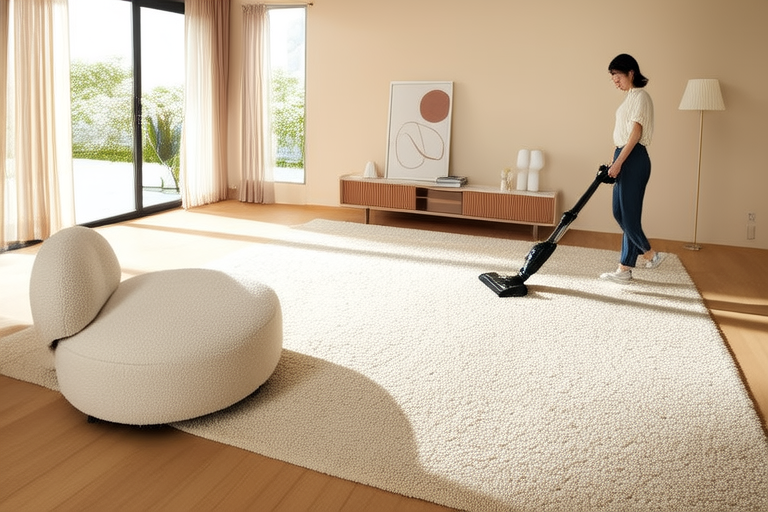Maintenance Made Easy: The Ultimate Guide to Cleaning Carpets at Home
Introduction
Keeping your carpets clean and fresh is not just about maintaining the aesthetic appeal of your home; it’s also crucial for your health and well-being. Dust, allergens, and bacteria can accumulate in carpet fibers over time, potentially causing respiratory issues and other health problems. Regular cleaning helps prevent these issues and extends the life of your carpets. In this comprehensive guide, we’ll explore various methods and tips to help you maintain your carpets effortlessly, ensuring they stay clean and welcoming.
Understanding Different Carpet Types
Before diving into the cleaning process, it’s important to understand the type of carpet you have. Different materials require different cleaning techniques. Here are some common types:
Synthetic Carpets
Synthetic carpets, such as nylon, polyester, and polypropylene, are popular due to their durability and resistance to stains. These carpets are generally easier to clean compared to natural fibers. They can be cleaned using a variety of methods, including steam cleaning, vacuuming, and spot treatment.
Natural Fiber Carpets
Natural fiber carpets, like wool and sisal, are more delicate and require gentle cleaning methods. Wool carpets, for instance, are highly absorbent and can retain moisture, making them susceptible to mold and mildew if not dried properly. Sisal carpets, made from plant fibers, are less prone to staining but can wear down quickly with heavy traffic.
Blended Carpets
Blended carpets combine synthetic and natural fibers, offering a balance between durability and aesthetics. However, they may require specialized cleaning solutions to avoid damaging the fibers.
Essential Tools and Products for Carpet Cleaning
To effectively clean your carpets, you need the right tools and products. Here’s a list of essentials:
- Vacuum Cleaner: A high-quality vacuum cleaner is essential for removing loose dirt and debris. Look for models with adjustable suction power and attachments for reaching tight spaces. A vacuum with a HEPA filter can also help capture allergens and dust mites.
- Carpet Cleaner: For deep cleaning, consider investing in a carpet cleaner. There are several types available, including portable units and professional-grade machines. Portable cleaners are convenient for regular maintenance, while professional units offer more powerful cleaning capabilities.
- Cleaning Solutions: Choose cleaning solutions based on your carpet type. For synthetic carpets, water-based detergents are usually sufficient. Natural fiber carpets may require pH-balanced or enzyme-based cleaners to prevent damage. Always check the manufacturer’s recommendations before using any cleaning product.
- Baking Soda and Vinegar: These household items are great for deodorizing and freshening up carpets. Baking soda can absorb odors, while vinegar acts as a natural disinfectant. Mix equal parts baking soda and white vinegar for a simple, effective homemade cleaner.
Step-by-Step Carpet Cleaning Process
Cleaning your carpets doesn’t have to be a daunting task. Follow these steps for a thorough and efficient cleaning session:
- Pre-Treat Stains: Identify and pre-treat any stains before deep cleaning. Use appropriate cleaning solutions for different types of stains—enzymes for pet accidents, rubbing alcohol for ink, and hydrogen peroxide for blood. Allow the solution to sit for a few minutes before blotting with a clean cloth.
- Vacuum Thoroughly: Start by thoroughly vacuuming your carpets. Pay special attention to high-traffic areas and corners. This step removes loose dirt and debris, making the subsequent cleaning process more effective.
- Apply Cleaning Solution: Spray your chosen cleaning solution onto the carpet, ensuring even coverage. Avoid over-saturating the fibers, as this can lead to prolonged drying times and potential damage.
- Scrub or Extract: Use a scrub brush or an extraction tool to work the cleaning solution into the carpet fibers. For deep cleaning, a steam cleaner can be very effective. Follow the machine’s instructions carefully to ensure optimal performance.
- Rinse and Dry: Rinse the carpet with clean water to remove any remaining cleaning solution. Use a wet/dry vacuum or squeegee to extract excess water. Open windows and doors to promote airflow and speed up the drying process. Use fans if necessary to prevent mold and mildew growth.
Preventive Measures to Keep Your Carpets Clean
Regular cleaning is essential, but preventive measures can significantly reduce the frequency and intensity of deep cleaning sessions. Here are some tips:
- Use Doormats: Place doormats at entryways to trap dirt and debris before they reach your carpets. Encourage family members and guests to wipe their feet before entering the house.
- Rotate Furniture: Rotate furniture periodically to distribute foot traffic evenly across the carpet. This prevents certain areas from wearing out faster than others.
- Protect High-Traffic Areas: Consider placing area rugs in high-traffic areas to shield the underlying carpet from excessive wear and tear. Vacuum area rugs regularly to keep them clean.
Case Study: Efficient Carpet Cleaning for a Busy Family
Imagine a family with two young children and a busy schedule. Keeping the carpets clean can be challenging, but with the right approach, it’s manageable. Here’s how they did it:
Initial Assessment
The family identified high-traffic areas, particularly around the living room and dining area, as priority zones. They decided to invest in a portable carpet cleaner and HEPA vacuum cleaner for daily maintenance.
Weekly Routine
They established a weekly cleaning routine that included vacuuming all carpets and spot-cleaning spills immediately. This routine helped maintain the overall cleanliness of the carpets and prevented deep-seated dirt from accumulating.
Deep Cleaning Schedule
Every three months, they scheduled a deep cleaning session using the portable carpet cleaner. They also rotated furniture to ensure even wear and tear. During these sessions, they used baking soda and vinegar to deodorize and freshen up the carpets.
Conclusion
Maintaining clean carpets is an essential part of home care, contributing to both aesthetic appeal and health benefits. By understanding your carpet type, using the right tools and products, following a structured cleaning process, and implementing preventive measures, you can keep your carpets looking fresh and inviting. Remember, consistency is key—regular maintenance will save you time and effort in the long run. Start today, and enjoy a cleaner, healthier home environment.
